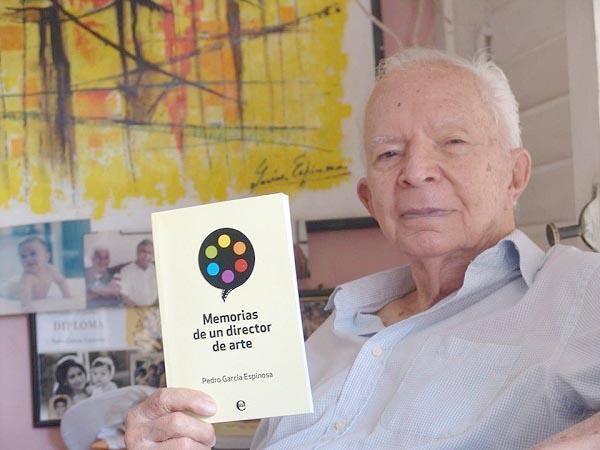Five years after the passing of Pedro García Espinosa, we recall the work of he who led or collaborated on the art direction of celebrated Cuban films
The visual distinction, scenic accuracy, factual rigour and even the selection of diverse elements within the frame will depend greatly on the aesthetic knowledge, artistic sensibility, research capacity and talent of a film’s art director.
This is an essential figure, who works jointly with the film’s director, its director of photography, and the areas of set design, makeup, costume, setting and props.
They are inherent and necessary in all film work, though there is certain cinema, such as period pieces, whose reconstructions have in art directors and their teams their central architects, as they bear ultimate responsibility for realising the artistic vision for the screen with a degree of detail and verisimilitude demanding exhaustive levels of study.
Although constituting a figure that, at least bearing that name (art director), arrived late to the Cuban screen, our cinema has benefited from notable creators in such a field.
One of them is Pedro García Espinosa, whose passing reached five years this 14th August. He died in Havana, the city where he was also born on 20th September 1931.
His work is seen in films – in which he either led or collaborated on art direction – made by Tomás Gutiérrez Alea, Humberto Solás, Manuel Octavio Gómez, José Massip, Enrique Pineda Barnet, Ugo Ulive, Armand Gatti, Fernando Birri and Miguel Littín, among other filmmakers.
The founding member of Icaic, a graduate in Art History, possessed the epistemological premises to be the outstanding art director he was: he studied painting at San Alejandro; plus Set Design at the Centro Sperimentale di Cinematografia in Rome and the Institut des Hautes Études Cinématographiques in Paris.
Following his brief Italian stage, when he shared work or received instruction from notable Iberian set designers, Pedro sees his credit – for the first time in revolutionary Cuban fiction feature film – in El joven rebelde, directed by his brother, Julio García Espinosa, in 1961.
Five years earlier, the member of the Sociedad Cultural Nuestro Tiempo had conceived the set design elements for the legendary short El Mégano. And in that same 1961 he lent his services to the medium-length film Realengo 18.
The also visual artist (with more than 300 works in different formats and techniques to his name); professor; writer and advisor for film, radio and television, developed an extensive trajectory on the national screen, participating in over 30 fiction and documentary productions.
His mark remained on unforgettable titles of the island’s seventh art, including, among others, Aventuras de Juan Quinquín, Lucía, La primera carga al machete, Los días del agua, Una pelea cubana contra los demonios, Mella, La última cena, Cecilia, Amada, and Reina y Rey, his last fiction film; like the first, it was directed by his brother, Julio García Espinosa.
The author of the book Memorias de un director de arte (Ediciones Icaic), whose work also extended to theatre and television fiction, held, among his recognitions, the Medalla por la Cultura Nacional.
Current generations of Cuban viewers and filmmakers have in Pedro a reference of commitment, dedication and an exquisite artistic sensibility, someone who loved and defended national cinema, several of whose most celebrated frames bear his mark.




